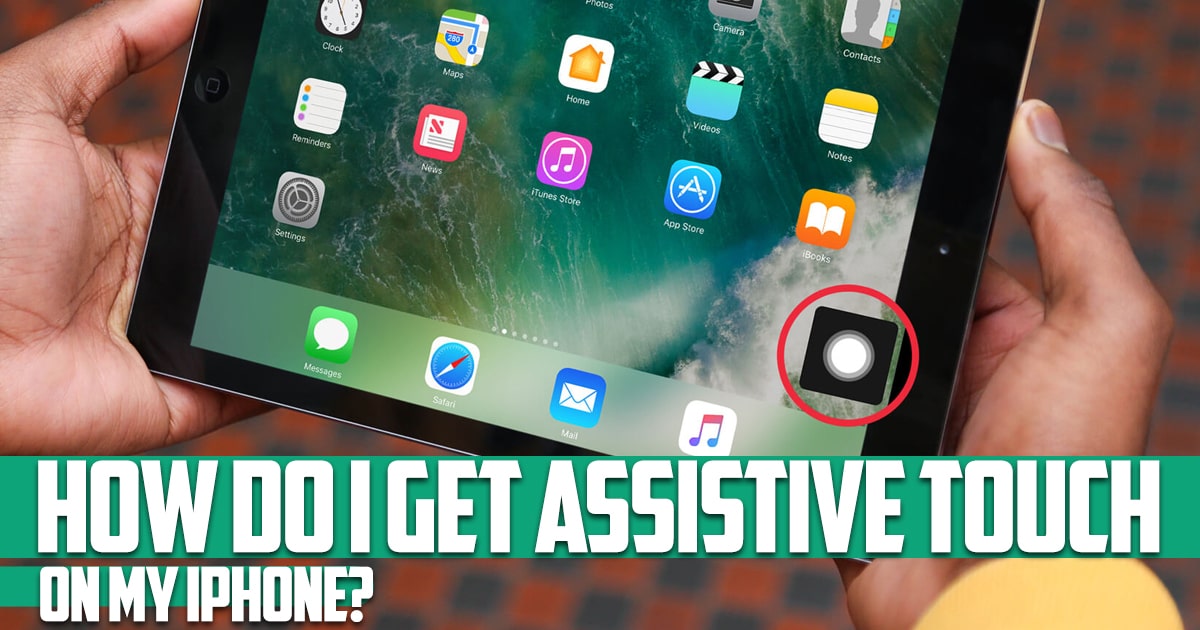How Do I Get Assistive Touch on My iPhone?

How do I get assistive touch on my iPhone? Apple has been trying to move users away from the home button for some time. In fact, the latest iPhone models do not have a home button at all. But that does not mean you can’t put a virtual home button on the screen. Whether your iPhone doesn’t have a button or you have an older iPhone and the home button no longer works reliably, you can bring it to the screen with just a few taps. This is exactly what we are going to discuss in this post from Free Phone App. Stay tuned to the end of this guide if this is something that interests you.

What Is iPhone Assistive Touch?
The virtual home key or Assistive Touch allows you to activate and access buttons such as volume keys, take a screenshot, lock the screen, etc. This way you no longer have to go through various taps and buttons to be able to take care of simple operations using your device. In addition to making it easier for you to do your daily tasks, this will prevent the corresponding buttons from wear and tear too which has to count for something in its own right.
How Do I Get Assistive Touch on My iPhone?
You can find AssistiveTouch settings in these 4 steps on your iPhone:
- Settings
- Accessibility
- Touch

4. Assistive Touch

Turn on AssistiveTouch there and a circular button appears on your screen, floating above everything else. You can drag the button around if needed to keep it out of your way. In a nice touch, if you have the AssistiveTouch button somewhere at the bottom of your screen that gets in the way of typing, it moves to the left of the dictation key when you open the on-screen keyboard.
Tap the AssistiveTouch button and a menu will appear. The Notification Center, Control Center, Home, and Siri buttons are fully present, but Device and Custom need more explanation:
- Device: Tap this button to access a variety of system settings such as screen lock and rotation, mute, and volume control. Tapping on the More button offers additional functions like App Switcher, Screenshot Capture, Emergency SOS, Restart, Accessibility, Additional Gestures, and Apple Pay. Shaking the device lets you cancel an action, though you can turn it off in Settings, Accessibility, Touch if that bothers you.
- Custom: The custom button provides an interface that allows you to simulate finger movements such as zoom and rotate, double tap, and long press. Tap on a gesture and a dark dot will appear on your screen. Drag it to a spot on the screen, and iOS will simulate the gesture at that point. You can create custom gestures in Settings > Accessibility > Touch > Assistive Touch > Create New Gesture. Next, we want to see how to customize the AssistiveTouch menu.
How to Customize AssistiveTouch Menu
Although the contents of the AssistiveTouch menu are useful, they may not suit your needs all the time. You can change what is presented in the menu by default. In order to do this, you will need to go to:
- Settings
- Accessibility
- Touch
- AssistiveTouch
- Customize Top Level Menu
Tap any of the icons to see a long list of actions you can use instead of the default action. For example, if you don’t need help activating Siri, or you’re having trouble double-pressing the side button to bring up Apple Pay, you can tap Siri, select Apple Pay from the list and tap Done. Note that all your shortcuts are listed. So, you can assign a shortcut in the menu. In this section, you can alter the Assistive Touch options and have your own favorite way of doing things. Some of these options include the following:
- Lock Screen: This option works the same as pressing the power key to lock the screen. You can use this option if your power button is broken or stuck or if you just feel like it
- Volume Up: Increase the volume of the device
- Volume Down: decrease the volume of the device
- Mute: Silence the device
- Triple-Click: Hit the home button three times
- Screenshot: Taking a screenshot with a software button
Summing Up
The assistive touch feature or motion assistant of iOS is a functional feature in iPhone and iPad devices that has been present in Apple products since iOS 5 and is now considered one of the most useful features of this operating system. By activating the Assistive Touch software button, an icon with the ability to move will appear on your iPhone screen, which will provide you with several other options, the most important of which are the Home and Control Center options. The assistive touch feature is also customizable, and you can add many options that personally suit you to your iPhone’s Assistive Touch.
In this article by the Free Phone App team, we have answered one of the most frequently asked questions about Assistive Touch and iPhones. The question was, how do I get assistive touch on my iPhone? Hope you found the guide useful.





